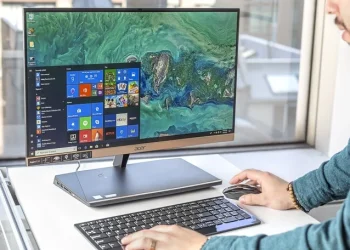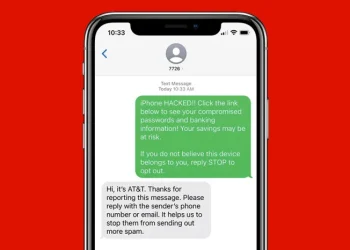Purchasing a laptop is a significant choice. There are many different makes, models, and chip configurations to select from, and most of us wait years between purchases this size. You’re in luck because we’ve tested a lot of the new versions in the last 12 months. These are the laptops that we believe are the best available right now.
See our guide on How to Buy a Laptop if you’re unsure about what you need or the meaning of all the technical speak. See our several other recommendations on computers, such as the Best Gaming Laptops, Best Linux Laptops, Best MacBooks, and Best Laptop Backpacks.
Best Windows Laptop
HP Spectre x360 14 (2024)
Wired recommends the lightweight Windows notebook, the Spectre x360 (9/10). The sharp, heavily designed Spectre x360 of a few years ago is not this one. The current model has a sleek, clean design with OSHA-friendly curves that are covered in corporate black, silver, and blue. With its thickness of 19 millimeters and weight of 2.4 pounds, it belongs to the ultraportable category.
The AI-infused Intel Core Ultra CPU, specifically the Ultra 7 155H variant, is the main update for 2024. It is supported by a powerful 32 GB RAM and a 2-TB solid state drive. Taking into account the 360-degree hinge and touchscreen, that’s not too awful. The performance exceeded our criteria in almost every category, which was exceptional. In our tests, which involved looping a YouTube video at maximum brightness, the battery performed admirably as well, yielding 10.5 hours of runtime, which is much longer than any other Core Ultra laptop we’ve tested to date.
The Spectre x360 is light on ports, with two USB-C Thunderbolt 4 ports (one used for charging) and a single USB-A port partially covered by an awkward and unnecessary spring-loaded, flip-out panel, but it’s enough to get the job done. A pair of hinges allows the screen to fold back 180 degrees, converting the laptop into a 14-inch tablet. A fingertip works on the screen, as does the stylus included in the box, and the rechargeable active pen snaps magnetically to the side of the chassis when not in use. The only issue is that the touchpad sometimes misses taps and clicks, but it wasn’t bad enough to stop us from recommending this
Best MacBook
Apple MacBook Air (13- and 15-Inch, 2024)
Our favorite MacBook Air is the most recent model (7/10, WIRED Recommends) equipped with Apple’s M3 chip. It’s a stylish, lightweight device with more power than the normal person could need. There are two screen sizes available: 13 and 15 inches, both with a refresh rate of 60 Hz. Although we discovered the larger model had a longer battery life, they are otherwise pretty similar. The first MacBook with a large screen at a reduced price is the 15-inch, and having that much screen real estate is great for work. Additionally, the display is visually pleasing, with a sharp 1080p webcam directly above the notch. These machines are identical save for the 15-inch’s somewhat stronger six-speaker sound system.
MacOS performance is effortless for routine chores like editing documents and accessing the web, and battery life continues to outperform competitors’ offerings. You may experience occasional stuttering if you use demanding apps on your devices. In case you intend to edit photos or videos more frequently, increase the unified memory to 16 GB instead of 8 GB. The Mac does have a tendency to run warm, but it’s a fanless design, so you’ll never feel like you’re sitting in an aeroplane. One significant drawback? You won’t be able to set it up with two monitors because it can only connect to one external monitor.
Best Copilot+ PC
Samsung Galaxy Book4 Edge
Pay attention. Not that you ought to get a Copilot+ PC. These laptops, which have a new designation from Microsoft, are equipped with Qualcomm Snapdragon chipsets that have been optimized for multiple new AI functions. The Samsung Galaxy Book4 Edge (8/10, WIRED Recommends) is our top pick if you decide you need one. Although it has compatibility concerns and mediocre graphics performance, which affect all Copilot+ PC hardware, these are mostly outweighed by the device’s numerous other advantages.
First off, compared to other Copilot+ PC laptops we’ve used, it performs better overall, and its larger 15.6-inch LCD even makes room for a numeric keypad without making the keyboard feel crowded. The Galaxy Book4 Edge was able to keep up with rapid-fire discourse in ways that other Copilot+ PC devices we tested were not able to when it came to AI-driven tasks like Microsoft’s real-time Live Captions. In addition, it maintained its coolness and quietness for the entire 14 and a half hours that it ran YouTube full-screen videos on. Although it costs a little more than the competitors, you had better be ready to play with AI technologies. It’s definitely worth upgrading.
Best Budget Laptop
Asus Zenbook 14 OLED (2024)
We’ve been pleasantly surprised to see more lower-cost laptops that still incorporate some measure of this season’s hottest feature—artificial intelligence-focused performance tuning. The Asus Zenbook 14 OLED (7/10, WIRED Review), the latest in the company’s line of affordable, no-nonsense laptops, is under $1,000 and uses the new AMD Ryzen 7 CPU (model 8840HS).
This is a small, portable machine (3.1 pounds and 19 mm thick), and it packs in plenty of ports despite the slim form. There are two USB-C ports (one of which is needed for charging), one full-size USB 3.2 port, a full-size HDMI output, and a microSD card reader. The keyboard has small arrow keys but is otherwise nice to type on. Read our Best Cheap Laptops guide for other picks.
Specs to look for: AMD Ryzen 7 8840HS, 16 GB of RAM, 512-GB SSD, 1,920 x 1,200 OLED Touchscreen
Best Linux Laptop
System76 Lemur Pro Laptop
Not into Windows 11? Try Linux. System76’s Lemur Pro (9/10, WIRED Recommends) is a thin, light 14-inch Linux laptop that strikes the best balance between power and portability. It’s based around an Intel Core Ultra 5 processor with 8 gigabytes of RAM and a 500-gigabyte SSD. You can configure the Lemur Pro with a Core Ultra 7 chip if you want more power, as well as up to a whopping 8 terabytes of storage and 56 GB of RAM. The port selection is good, with one USB 3.2 Type-C port, 1 Thunderbolt 4 port, two USB-A ports, a 3.5-mm headphone/microphone combo jack, a microSD card reader, and HDMI 2.0. The battery life is fantastic, lasting all day in most use cases, and the keyboard is pleasant enough to type on. It’s not the best for gaming or video editing, but for everything else, this is a beast of a Linux machine. Read our Best Linux Laptops guide for more recommendations.
Best Repairable, Upgradeable Laptop
Framework Laptop 13 (2023)
If you want to buy a laptop you can keep for five, maybe 10 years, look no further than Framework’s Laptop 13 or 15 (8/10, WIRED Recommends). The user-repairable and upgradable Framework Windows laptop comes in many flavors (it’s Linux-friendly too), but we’re fans of the DIY build options, which allow you to assemble the machine yourself, screwing in SSD, RAM, screen bezel, and more. The 2023 Intel version features much-improved battery life and an excellent matte 3:2 screen. The hot-swappable, extensible port system means you can add and remove ports according to your needs. When a new chipset is released, you can upgrade instead of buying a whole new laptop.
Best Gaming Laptop
Razer Blade 14
Razer is known for its high-end gaming laptops, and the slim, aluminum chassis on the Razer Blade 14 (8/10, WIRED Recommends) has the same luxe build quality we’ve liked it for in the past. The star of the show is the bright and vivid 2,560 X 1,600 IPS, G-Sync-compatible display with blacks so dark it almost felt like the screen disappeared in dark rooms. It’s not quite an OLED display, but it was close enough that it fooled me for hours of flying through space. Best of all, the 240-Hz panel supports ultra-high frame rates for the smoothest gameplay.
Inside, the Blade 14 comes equipped with the powerful AMD Ryzen 9 7940HS, 16 GB of DDR5 RAM, a 1-TB NVMe SSD, and an Nvidia GeForce RTX 4060 Laptop GPU (upgradeable to an RTX 4070). The RTX 4060 is decently powerful, but the RTX 4070 is a respectably strong GPU that can help power through even demanding games like Starfield. It’s worth noting that the newer Blade 14 uses the Ryzen 9 8945HS chipset, which isn’t a huge difference over its predecessor. You can save some cash with the older chip, but it’s totally fine to snag the newer one as well. If you want even more power and don’t mind the heft, check out the Razer Blade 18 (8/10, WIRED Recommends). See our full Guide to Gaming Laptops for more picks. —Eric Ravenscraft








